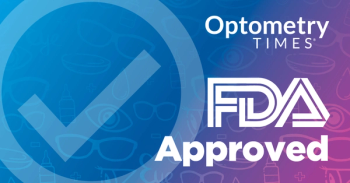
- August digital edition 2024
- Volume 16
- Issue 08
Racial and economic disparities in diabetes care and outcomes
It’s time to act with a few rational and relatively modest proposals.
Substantial research shows significant racial and class disparities in diabetes care and outcomes. For instance, non-Hispanic Black Americans with type 2 diabetes are at a doubly higher risk of dying from a diabetes complication, a 2.5 times higher risk of being hospitalized for a diabetes complication, and are over 3 times more likely to suffer end-stage renal disease than their White counterparts.1 Low income increased mortality risk by more than 80% in both White and Black Americans with type 2 diabetes in an analysis of more than 60,000 patients enrolled in the Southern Community Cohort Study.2 Rates of lower extremity amputation associated with diabetes are also 2 to 4 times higher among Americans of color and those with annual household incomes of less than $40,000.3 Moreover, data shows that many of these same patients are far less likely to be prescribed cardiorenal-protective drugs such as glucagon-like peptide-1 receptor analogs or sodium glucose transporter type-2 inhibitors, even after controlling for household income,4 as well as technologies that significantly improve metabolic control of diabetes, such as newer insulins and continuous glucose-monitoring devices.5
Rates of sight-threatening diabetic retinopathy (STDR) are similarly higher in Black and Hispanic Americans,6 with recent evidence showing that, irrespective of income, glycated hemoglobin (HbA1c) blood pressure, dyslipidemia and diabetes duration, Black Americans are 40% more likely to develop diabetic macular edema (DME), the leading cause of vision loss associated with diabetes.7 To put a finer point on the significance of this finding, being Black in the United States poses an equivalent elevated risk for DME as does a 3-point higher HbA1c value. Another cross-sectional studyrevealed that patients with diabetes who are Black, Hispanic and/or have a limited income encounter specific barriers with respect to receiving timely eye examinations, including lack of child care, inability to take time off from work, accessibility of providers, lack of transportation, lower awareness of good diabetes self-management practices due to limited or no formal diabetes education, and a perception that their providers are more judgmental, less willing to answer questions, and less concerned about their welfare.8
These realities are both ethically reprehensible and indefensible from a public health perspective. But what can be done? Standing on the shoulders of smart clinicians, researchers and public health advocates, I would like to offer a few modest proposals, as follows:
Institute a nationalized system of retinal photography and remote image analysis to screen for DR, and especially STDR, in every patient diagnosed with diabetes at major points of contact.
This includes involvement from primary care providers’ offices, community clinics, pharmacies, and wherever else eye care providers see patients. DR used to be the leading cause of severe, irreversible vision loss in adults of working age in the UK, but that is no longer true with the implementation of a nationwide telescreening program over the past decade.9 The details of such programs are debatable (e.g. frequency, density of access points, image field of view, certification of image-readers, and use of artificial intelligence, to name a few) and disparities remain in the UK among under-served, limited income, minority and/or rural populations. However, this single strategy is anticipated to make a real difference both now and in the future by reducing significant visual impairment due to DR in the UK from 4.7% in 2013 to 3.1% in 2050 and saving the National Health Service hundreds of millions of British pounds over the coming decades.10 Despite decades of trying to achieve higher rates of dilated eye examinations among patients with diabetes in the US, 40% to 60% of them are not receiving dilated eye exams at recommended intervals.11 Additionally, DR and/or DME remain the leading causes of severe vision loss in Americans of working age.11 The current US model simply is not working as well as it should.
Redouble efforts toward targeted patient education for high-risk groups, including meaningful patient incentives.
The CDC and National Eye Institute have instituted several patient engagement programs, including the Don’t Lose Sight of Diabetic Eye Disease and Promoting Eye Health campaigns. However, these programs have had limited impact to date,12 most likely due to problems with health care literacy as well as (largely digital) access to materials.13 In addressing this digital divide, using easily understood language and fostering delivery of diabetes education via trusted community-based resources have proven effective. Studies also show that providing patient education alongside meaningful financial incentives ($300 to $600) to underserved patient populations to achieve weight loss, medication and appointment adherence, and improved metabolic control results in better outcomes and is cost-effective.14-16 The only randomized trial that assessed eye screening attendance in patients with a 2-year history of nonattendance used paltry sums ($12 at the visit or a raffle system with low odds of receiving $1200) and found that both incentives resulted in less eye screening attendance than usual patient communications.17 There is good reason to believe that a combination of patient communications with meaningful financial incentives would improve eye assessment and examination rates for people with diabetes and reduce rates of vision loss.
Train a more diverse and culturally competent eye care workforce.
Health professional schools must reexamine admission criteria to help meet the needs of diverse, underserved and at-risk patient populations. Rather than only prioritizing applicant grades and standardized test scores, alternative admissions metrics could be deployed that also emphasize empathy and communications skills.18 Specifically recruiting high school students and college undergraduates from communities under-represented within the eye care workforce could help forge higher levels of patient trust, adherence, and improved clinical outcomes; this is something that can be addressed by both health professions schools’ admissions committees as well as community practitioners. The notion that optometrists could and should participate in growing a cadre of highly knowledgeable and culturally competent diabetes care providers is obvious.
A combination of these modest tactics, perhaps in tandem with a few more radical strategies (eg, reduction of diabetogenic environmental exposures that unequally affect different populations—think micro-plastics, air pollution, food deserts/swamps, poverty and racism, universal access to health care, and science-based and public health-centered regulation of food ingredients and advertising) would undoubtedly reduce both vision loss and multiple complications associated with diabetes and other cardio-metabolic diseases.
References:
Xu J, Murphy SL, Kochanek KD, Arias E. National Vital Statistics Reports. US Department of Health and Human Services. 2021;70(8):55.
https://www.cdc.gov/nchs/data/nvsr/nvsr70/nvsr70-08-508.pdf Conway BN, May ME, Blot WJ. Mortality among low-income African Americans and whites with diabetes. Diabetes Care. 2012;35(11):2293-2299. doi:10.2337/dc11-2495
McDermott K, Fang M, Boulton AJM, Selvin E, Hicks CW. Etiology, epidemiology, and disparities in the burden of diabetic foot ulcers. Diabetes Care. 2023;46(1):209–221. doi:10.2337/dci22-0043
Elhussein A, Anderson A, Bancks MP, et al; Look AHEAD Research Group. Racial/ethnic and socioeconomic disparities in the use of newer diabetes medications in the Look AHEAD study. Lancet Reg Health Am. 2022;6:100111. doi:10.1016/j.lana.2021.100111
Kanbour S, Jones M, Abusamaan MS, et al. Racial disparities in access and use of diabetes technology among adult patients with type 1 diabetes in a US academic medical center. Diabetes Care. 2023;46(1):56-64. doi:10.2337/dc22-1055
Lundeen EA, Burke-Conte Z, Rein DB, et al. Prevalence of diabetic retinopathy in the US in 2021. JAMA Ophthalmol. 2023;141(8):747-754. doi:10.1001/jamaophthalmol.2023.2289
Haliyur R, Marwah S, Mittal S, Stein JD, Shah AR. Demographic and metabolic risk factors associated with development of diabetic macular edema among persons with diabetes mellitus. Ophthal Sci. 2024. doi:10.1016/j.xops.2024.100557
Huang BB, Saseendrakumar BR, Delavar A, Baxter SL. Racial disparities in barriers to care for patients with diabetic retinopathy in a nationwide cohort. Transl Vis Sci Technol. 2023 Mar 1;12(3):14. doi:10.1167/tvst.12.3.14
Liew G, Michaelides M, Bunce C. A comparison of the causes of blindness certifications in England and Wales in working age adults (16–64 years), 1999–2000 with 2009–2010. BMJ Open. 2014;4(2):e004015. doi:10.1136/bmjopen-2013-004015
Thomas RL, Winfield TG, Prettyjohns M, et al. Cost-effectiveness of biennial screening for diabetes related retinopathy in people with type 1 and type 2 diabetes compared to annual screening. Eur J Health Econ. 2020;21(7):993-1002. doi:10.1007/s10198-020-01191-y
Kropp M, Golubnitschaja O, Mazurakova A, et al. Diabetic retinopathy as the leading cause of blindness and early predictor of cascading complications-risks and mitigation. EPMA J. 2023;14(1):21-42. doi:10.1007/s13167-023-00314-8
Patel D, Ananthakrishnan A, Lin T, Channa R, Liu TYA, Wolf RM. Social determinants of health and impact on screening, prevalence, and management of diabetic retinopathy in adults: a narrative review. J Clin Med. 2022;11(23):7120. doi:10.3390/jcm11237
Lu Y, Serpas L, Genter P, Anderson B, Campa D, Ipp E. Divergent perceptions of barriers to diabetic retinopathy screening among patients and care providers, Los Angeles, California, 2014-2015. Prev Chronic Dis. 2016;13:E140. doi:10.5888/pcd13.160193
Ladapo JA, Orstad SL, Wali S, et al. Effectiveness of goal-directed and outcome-based financial incentives for weight loss in primary care patients with obesity living in socioeconomically disadvantaged neighborhoods: a randomized clinical trial. JAMA Intern Med. 2023;183(1):61–69. doi:10.1001/jamainternmed.2022.5618
Desai JR, Vazquez-Benitez G, Taylor G, et al. The effects of financial incentives on diabetes prevention program attendance and weight loss among low-income patients: the We Can Prevent Diabetes cluster-randomized controlled trial. BMC Public Health. 2020;20(1):1587. doi:10.1186/s12889-020-09683-5
Hulbert LR, Michael SL, Charter-Harris J, Atkins C, Skeete RA, Cannon MJ. Effectiveness of incentives for improving diabetes-related health indicators in chronic disease lifestyle modification programs: a systematic review and meta-analysis. Prev Chronic Dis. 2022;19:E66. doi:10.5888/pcd19.220151
Judah G, Darzi A, Vlaev I, et al. Financial disincentives: a three-armed randomised controlled trial of the effect of financial Incentives in Diabetic Eye Assessment by Screening (IDEAS) trial. Br J Ophthalmol. 2018;102(8):1014-1020. doi:10.1136/bjophthalmol-2017-311778
Nguyen M, Dent R, Fancher TL, Soriano AJ, Green CK, Henderson MC. Revolutionizing health professions admissions to achieve an inclusive workforce. Ann Fam Med. 2023;21(suppl 2):S75-S81. doi:10.1370/afm.2922
Articles in this issue
over 1 year ago
Using an anecdotal case study to lay old habits to restover 1 year ago
What’s new in contemporary ophthalmic drug delivery systemsover 1 year ago
Which myopia treatment works best?over 1 year ago
Education is power: Learning from the best at EyeCon 2024over 1 year ago
Minimize burnout by adding purpose and passionNewsletter
Want more insights like this? Subscribe to Optometry Times and get clinical pearls and practice tips delivered straight to your inbox.

















































.png)


